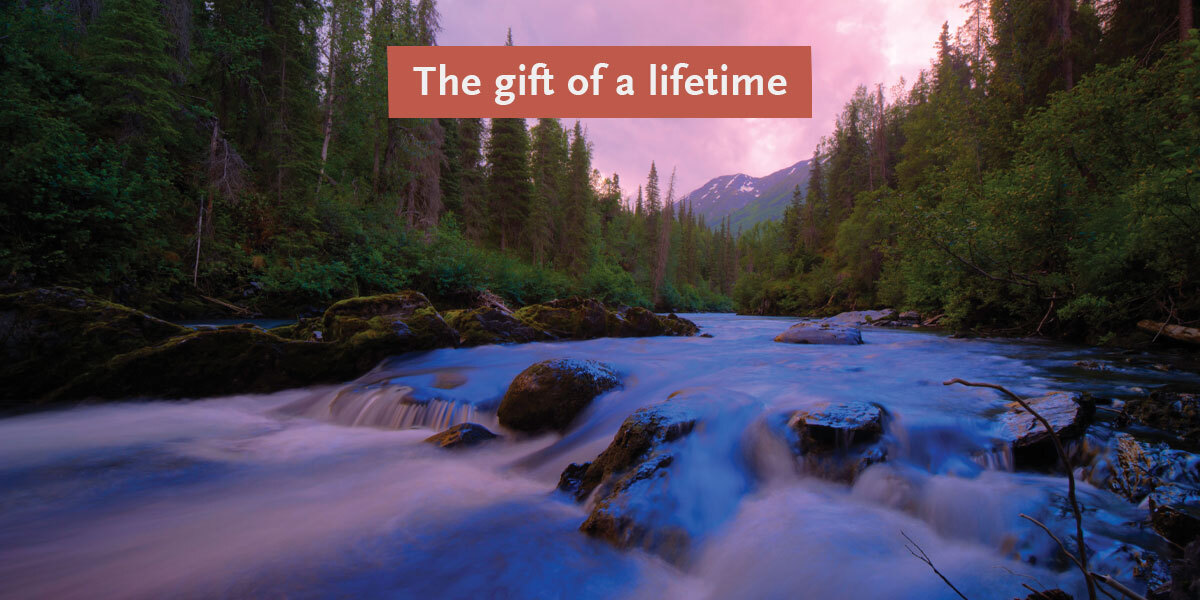Every salmon champion has a journey. Every journey shapes the movement.
Mariusz Wroblewski’s journey starts in Poland, on the banks of the Czarna Hańcza. Betsy Krier’s begins in a backyard pond north of Milwaukee, Wisconsin. Sam Snyder traces his roots back to the rivers of the San Juan Mountains, in Colorado and New Mexico.
Each began a trek toward purpose, not exactly sure where they were going or why. Pulled by some unseen force—an invisible line. Slowly, steadily, circuitously, they headed west and north, to salmon country.
Then the real work began. To find a new home. To make a difference in that new homeland. That search for home, in work and in life, is the basis of the Life History Project, a new WSC video series about three staff members working around the Pacific Rim.
The life histories of these three individuals are emblematic of many in the conservation community around the Pacific. They labor behind the scenes on behalf of coalitions and local partners, always putting fish first, along with the communities that depend on it. And their origin stories, as well as those of thousands of others across this vast salmon region, serve as inspiration for daily conservation work. Together, they are the tide that turns back Pebble Mine. They are the resolve to end poaching in Russia. The will that wouldn’t yield in the Skeena River estuary. The stamina that restores key rivers on the Oregon Coast and Olympic Peninsula.
The Life History Project: Mariusz Wroblewski
Mariusz Wroblewski had the farthest road to travel. Pressured to leave Poland as a dissident in the 1980s, Wroblewski had heard of the great salmon and trout rivers here in North America. He set out for them not knowing exactly what he would find or where he would land. Following the fish eventually took him back around the globe, to Russia, before finally settling in the Pacific Northwest. Wroblewski is now WSC’s program lead for conservation on the Western side of the Pacific, working with partners in Russia and Asian neighbors on a slew of different initiatives from scientific studies to catch-and-release programs to youth education.
Featured at the 2022 IF4 fly fishing film festival and other festivals!
The Life History Project: Betsy Krier
Betsy Krier converted to the salmon cause after witnessing spawning rituals for the first time, during a summer in Southeast Alaska. She’s never looked back, working first as a biologist for the Forest Service and then joining Wild Salmon Center in 2019. Based in Forks, Washington, she manages complicated stream restoration projects with partners on the Olympic Peninsula.
The Life History Project: Sam Snyder
Sam Snyder arrived in Alaska after an early career researching and writing about unlikely allies in the conservation movement. Joining the Pebble Mine campaign, however, he received a frosty reception from some of the folks he canvassed on one of Alaska’s most contentious issues. To pace himself and stay sane on the campaign trail, Snyder took up long distance running. And he’s soldiered on in defense of Bristol Bay for 11 years, through the birth of two children who are now in grade school.
***
We hope these stories are just the beginning for the Life History Project. As we emerge from travel restrictions and this isolating pandemic, we look forward to chronicling more of your journeys. While we all live for many of the same things—wild salmon, clean water, healthy forests, abundant wildlife, natural refuges, strong local communities, Native traditions, wild protein—each of our journeys is unique.
Like the salmon runs themselves, the rich diversity of human life histories makes this place and the salmon conservation movement whole.




